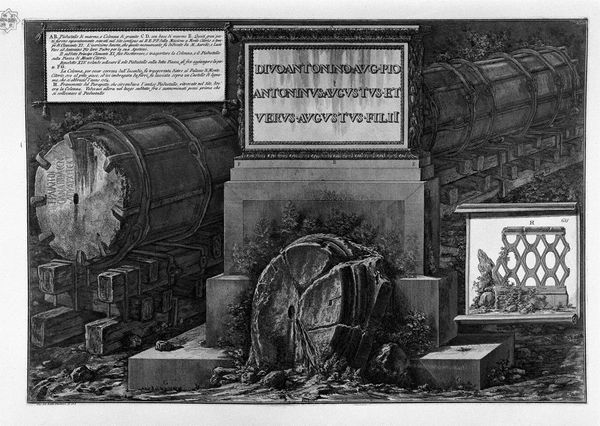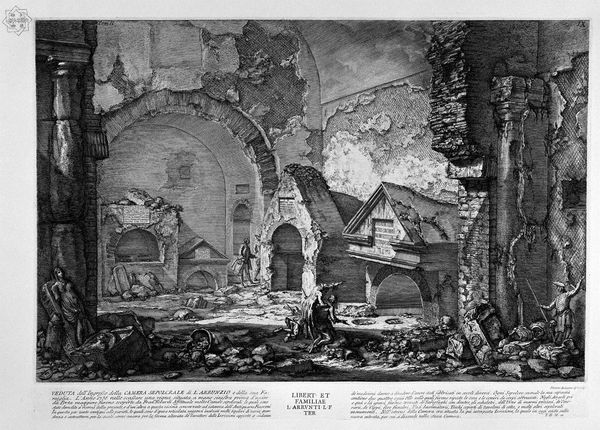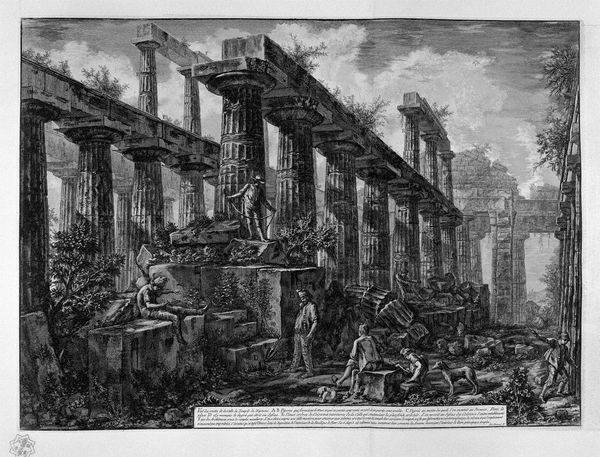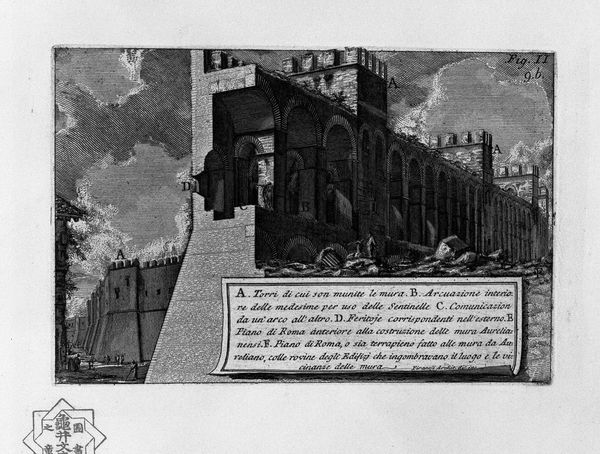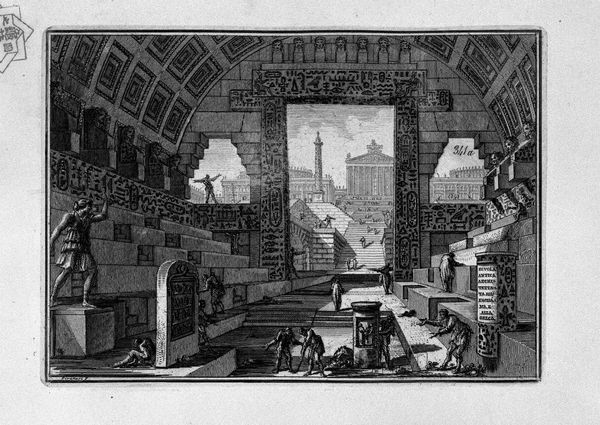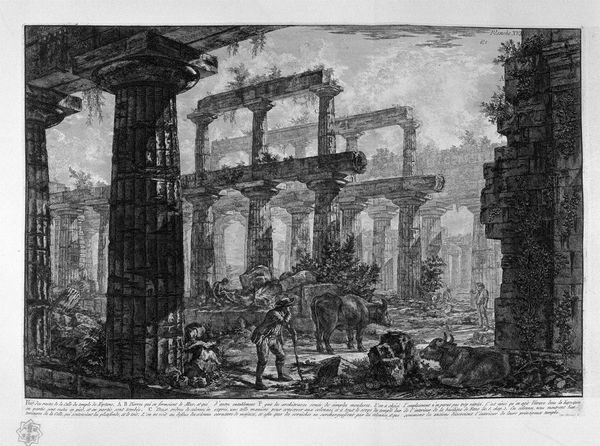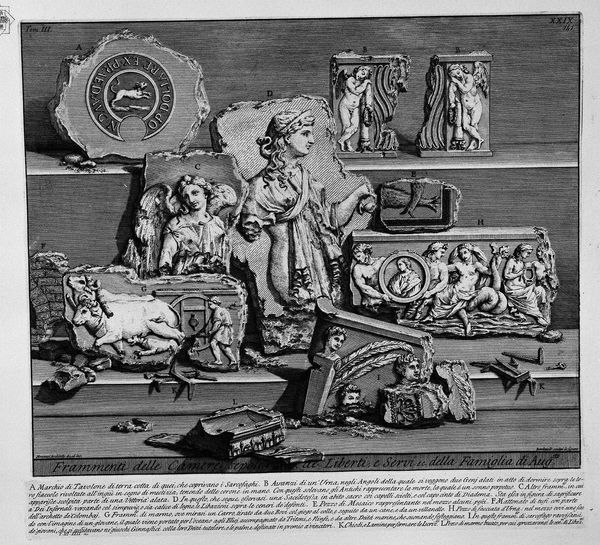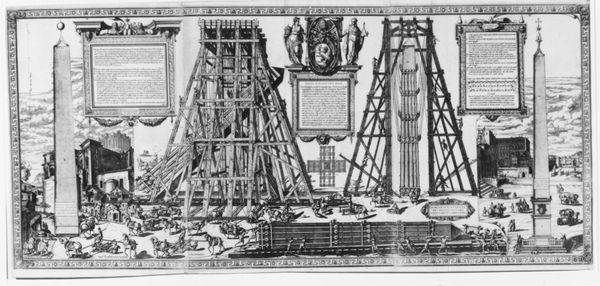
The Roman antiquities, t. 3, Plate XXX. Inscriptions, sarcophagi and other objects found in burial chambers earlier, etc..
0:00
0:00
drawing, print, etching, engraving
#
drawing
#
narrative-art
#
baroque
# print
#
etching
#
greek-and-roman-art
#
landscape
#
perspective
#
form
#
ancient-mediterranean
#
line
#
history-painting
#
academic-art
#
decorative-art
#
engraving
#
realism
Copyright: Public domain
Editor: Here we have "The Roman antiquities, t. 3, Plate XXX. Inscriptions, sarcophagi and other objects found in burial chambers earlier, etc.." by Giovanni Battista Piranesi. It's an etching, quite dark and full of detail depicting various Roman artifacts, and, oh dear, even a skeleton. It all feels quite dramatic and… cluttered. What do you see in this piece, beyond the obvious? Curator: Beyond the surface, this isn’t just a record of Roman artifacts. Piranesi's work exists at the intersection of history, power, and representation. How does depicting these fragmented ruins, and even human remains, shape our understanding of Roman civilization and its impact? He is not only showing us these artifacts, but actively constructing a particular narrative of decline and loss. Editor: Decline and loss? It almost feels celebratory in its detailed rendering. Curator: That tension is precisely the point! Piranesi’s meticulous technique almost romanticizes the ruins, while the content points to the ephemerality of empires. Think about the social and political climate of 18th-century Europe, the rise of nation-states and the anxieties surrounding power shifts. What do you think Piranesi might be commenting on by showcasing the remnants of a fallen empire? Editor: I suppose it's more than just documenting history, but maybe also questioning the future and legacy of power itself. Is he warning against imperial hubris, perhaps? Curator: Precisely! By focusing on fragments and ruins, he highlights the impermanence of human endeavors. This connects to contemporary anxieties about societal structures and legacies, pushing us to question what will remain of our own civilizations. Editor: I never thought of it that way before! Seeing the art as a conversation about power and its eventual decay really shifts the perspective. Curator: Exactly, and that is the power of art - it encourages these dialogues!
Comments
No comments
Be the first to comment and join the conversation on the ultimate creative platform.

